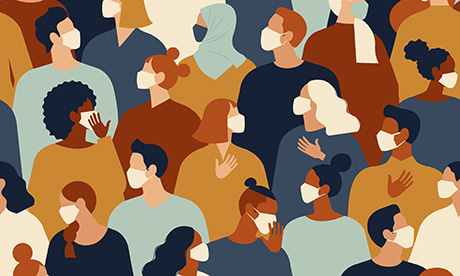As the world begins to emerge from the most recent surge of the Covid-19 pandemic, how do we return to normal?
And what should normal mean?
The feeling that we are ready for the return to normal is as much a product of exhaustion as of progress.
While there is much to be celebrated, especially the unprecedentedly rapid development of vaccines, the coronavirus remains both present and dangerous.
The costs and burdens of mitigation measures, especially as they affect young students and their parents, have also become clear.
A conversation about how to relax various pandemic protocols coexists with more than 900,000 total Covid deaths in the United States and with hospitals still filled to capacity in many areas.
People who are vaccinated are largely protected from severe disease and hospitalization; but for the unvaccinated and those with increased risk factors, Covid is still a deadly disease.
Combined with the increased transmissibility of the Omicron variant, this means that many health care workers are still in the trenches of the pandemic even as vaccinated people can cautiously begin to treat Covid as a risk similar to the seasonal flu.
And the ongoing burden of the pandemic is borne disproportionately by those who are already economically disadvantaged, whose work often requires more direct contact with members of the public and who have fewer resources and options to weather disruptions to child care and other practical arrangements caused by quarantines after positive test results.
The ability and willingness to sustain mitigation practices are limited resources, which must be stewarded as carefully as stockpiles of masks and medications.
One important lesson to take from these two years of pandemic is that the ability and willingness to sustain mitigation practices are limited resources, which must be stewarded as carefully as stockpiles of masks and medications.
Failure to recognize this in the early days of the pandemic, unfortunately, opened up divisions that were ripe for exploitation.
The politicization of public health guidance and cynical efforts to use the pandemic to further divide us into ideological tribes spent down resources of trust that are difficult, if not impossible, to renew quickly.
As society begins to build the “new normal” of emergence from the pandemic, efforts to rebuild and strengthen trust and solidarity are of as much importance as the ongoing distribution of vaccines and vigilance against coronavirus variants.
As formal Covid mitigation protocols are relaxed, it will be important to avoid worsening this tribalisation.
The temptation will be to either hold onto maximum precautions even in the face of smaller risks, or to abandon all precautions, even the least onerous.
But even while Americans may disagree about the balance of caution and risk, we need to be united in refusing to impute motives of malice or ignorance to those who think differently.
Everyone, including those who tend toward great caution and those who favour a speedy return to normal, must be willing to prioritize among various goals.
For example, encouraging vaccination is far more important than maintaining social distancing guidelines in all spaces; so, too, keeping in-person schooling for young children is far more important than ending mask mandates in all public spaces.
The church will also face any number of practical questions on the way back to normal, especially at the parish level.
Pastors and lay ministers will have to balance the relaxation of various mitigation practices with continuing care for those who are still at heightened risk, even as the coronavirus becomes endemic.
They should also take the lead in encouraging parishioners to be patient and generous with one another even when they are not on the same page about how comfortable they are in returning to Mass or, eventually, ceasing to wear masks.
The sickening normality the pandemic laid bare is that of inequality and lack of solidarity. Continue reading
Additional readingNews category: Analysis and Comment.




